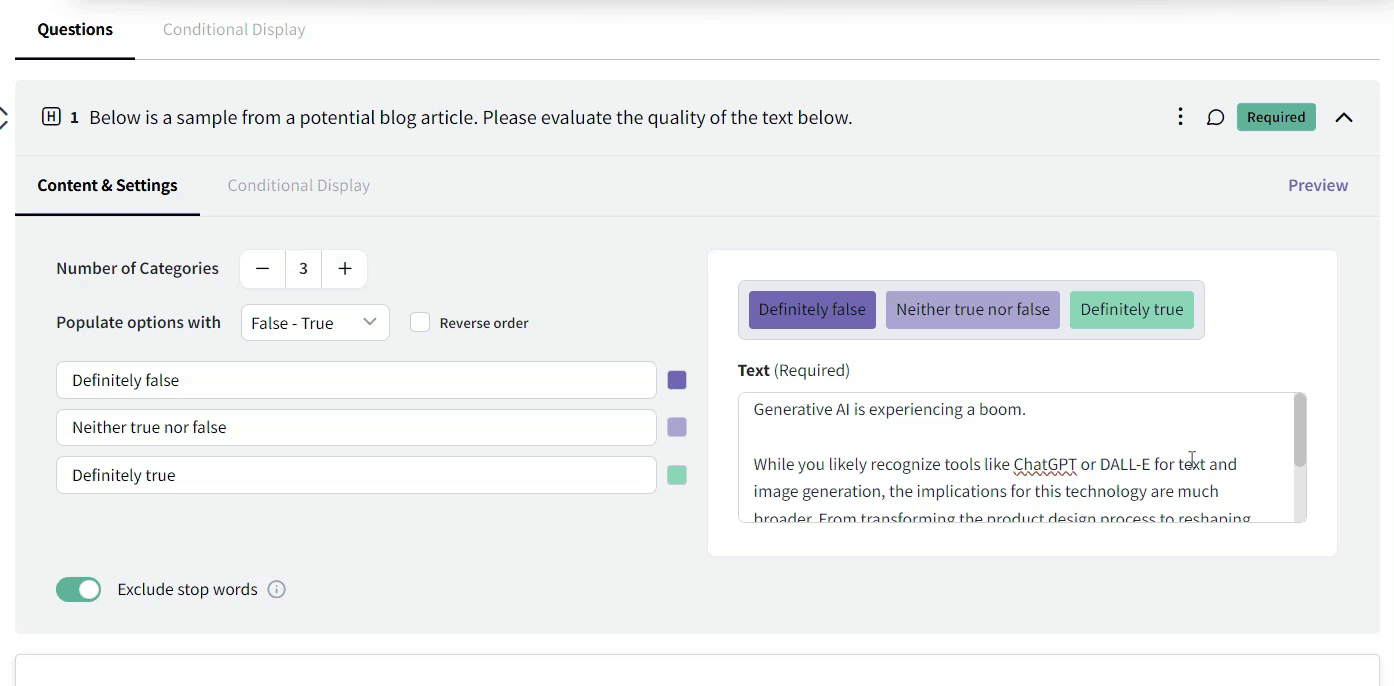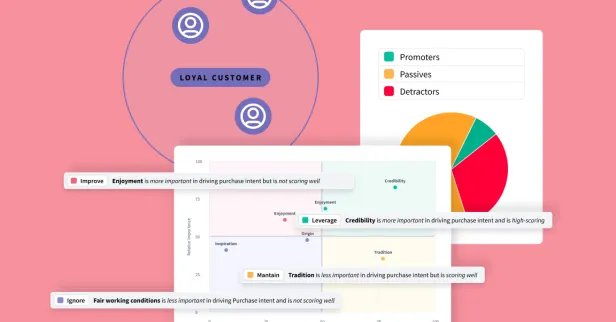Clear and compelling marketing messaging can mean the difference between engagement and disregard in oversaturated markets.
Whether you're promoting a product, service, or brand, the messaging you put in front of your market plays a pivotal role in shaping perceptions and influencing engagement. And, contrary to popular belief, developing home-run messaging requires much more than creativity and intuition.
In reality, if message testing isn't a part of your marketing strategy, you're likely wasting your time and resources on ineffective copy, ad campaigns that don't resonate, and landing pages that don't convert.
In this post, we'll share ways you can get started with message testing, methodologies that can improve your copy's effectiveness, and how you can use message testing to improve your marketing ROI.
What is Message Testing?
Marketers and insight managers typically use message testing to evaluate the effectiveness of different messaging strategies and determine which resonates most with the target audience. It involves presenting messaging variations, such as headlines, taglines, value propositions, or calls to action, to a sample of the target audience and measuring their responses. Message testing aims to identify the most compelling and impactful messaging that drives the desired outcome, whether it's generating leads, driving conversions, or building brand awareness.
The typical message testing process involves developing several variations of the copy you want to test, each with critical tweaks. You then share this copy with a random sample of your target market, asking questions on clarity, memorability, and relevance.
Why Do You Need Message Testing?
In marketing and advertising, it can be easy to fall into the trap of trying to be too clever. I speak from experience as a marketer myself.
Sometimes, this can pay off. But, more often than not, you end up with unclear messaging that only confuses your audience.
What you need is clear, concise language that conveys your value from the outset.
For example, skincare and makeup brand Glossier is a great B2C example of clear and concise messaging with just the right mix of cleverness.
It clearly states what they do (skincare and minimalist makeup) while adding some fun personality. Using their tagline to emphasize a clean and natural approach, they set themselves apart from others in their (crowded) industry and have gained a cult-like following amongst Gen Z and millennials.
Whether it's copy for ads, landing pages, or emails, message testing can help you:
_Size=sm)_Color=Success.png) Improve your click-through and conversion rates.
Improve your click-through and conversion rates.
Maximize the ROI of ad campaigns by targeting the right audience with the right message.
Mitigate your risks when testing new messaging.
Differentiate your messaging in a crowded market.
Better allocate resources towards proven messaging strategies.
How to Start Message Testing
To start message testing, you can use qualitative or qualitative methods (or both).
Qualitative Methods
Qualitative message testing focuses less on gathering a large volume of data and more on gathering information that is non-numerical in nature. Through focus groups and one-on-one interviews, you can better understand consumer motivations through free-flowing conversations.
Quantitative Methods
Quantitative market research is the collection of quantifiable data. This can include responses to surveys, polls, studies, experiments, or questionnaires. This type of research will provide hard data on the most effective messaging for your target audience.
In message testing (both quantitative and qualitative), you'll want to focus on metrics like:
Clarity: How well do people understand your messaging?
Differentiation: How different is your messaging from that of your competitors?
Relevance: How well does your messaging align with your audience's needs?
Recall: How memorable is your messaging?
Value: How useful or timely is your messaging?
Tools for Marketing Message Testing
Once you know the type of insights you want to collect (larger-scale quantitative data versus smaller-scale qualitative intel), you can start building your study. Depending on what you want to learn, you can use a few different message testing tools.
Below are some of the most common question types and experiments for message testing. If you need help deciding which sounds best, chat with our Generative AI research Consultant, Ada. She can help you choose and build the right tests and experiments for any use case.
Concept Testing
Concept testing might be a good fit if you want to better understand how people feel about multiple messaging ideas!
You can use concept testing to evaluate your messaging and better understand how consumers will receive it before it hits the market. Depending on the type of concept testing you choose, you can have people compare your messaging concepts, provide detailed feedback on a single concept, or provide quick feedback on multiple concepts. If you want to know more about the types of concept testing, check out this guide.
Text Highlighter Question Type
If you have longer pieces of copy (like articles, blog content, etc.) or need more granular feedback on the language you use, a text highlighter question type could be the perfect fit!
A text highlighter question allows you to share text with your target audience and have them mark it up with their feedback (based on the metrics you provide).
For example, respondents could highlight text snippets based on clarity, relevance to them, or even emotions the copy elicits.

To learn more, check out this in-depth piece on text highlighter questions.
MaxDiff Analysis
If you want to know which product, brand, or service attributes should take center stage in your messaging, a MaxDiff analysis will suit you well!
In a MaxDiff analysis, you input the different aspects of your offering (like "flavors," "sustainability practices," "Organic," "Ease of Use," etc.). Respondents are then shown multiple attributes and asked to choose which are most (and least) important to them. This methodology forces respondents to make trade-offs when making their selections, simulating real-world buying decisions.
The output will give you a rank of your attributes from most to least important. Allowing you to center your messaging around the factors that matter most to shoppers.
Open-Ended Questions
If you want to gather qualitative data at scale to better understand the sentiments surrounding your messaging, open-ended questions would be a good fit!
Open-ended questions allow for a broad range of possible responses and can give you a more nuanced understanding of how people view your messaging. The best part? Open-ended questions can be added to any survey and paired with concept tests or maxdiff analysis for qualitative insights.
Examples of great open-ended questions to include are:
What do you believe this message is trying to say?
Is any part of this message unclear?
What would be one change you would make to this copy?
Can you explain whether this message was relevant to you?
Focus Groups
A focus group could work for you if you want to gather smaller-scale qualitative insights that drill deeper into the specifics!
Focus groups bring together a small sample of your target audience, asking them questions about your messaging and how you convey yourself as a brand. These sessions are often led by a professional moderator who asks the group questions and leads the discussion.
Message Testing with SightX
SightX is an AI-driven market research platform offering a unified solution for product, brand, marketing, and pricing research. While powerful enough for insights teams at Fortune 500 companies, our user-friendly interface makes it simple for anyone to start, optimize, and scale their research.
With our Generative AI consultant, Ada, you can harness the power of OpenAI's GPT to transform your marketing research and insights. Collaborating with Ada is like having an expert researcher, brilliant statistician, and ace marketer on your team, helping you ask the right questions, choose the best experiments, pick out key insights, and seamlessly apply them to your business.
